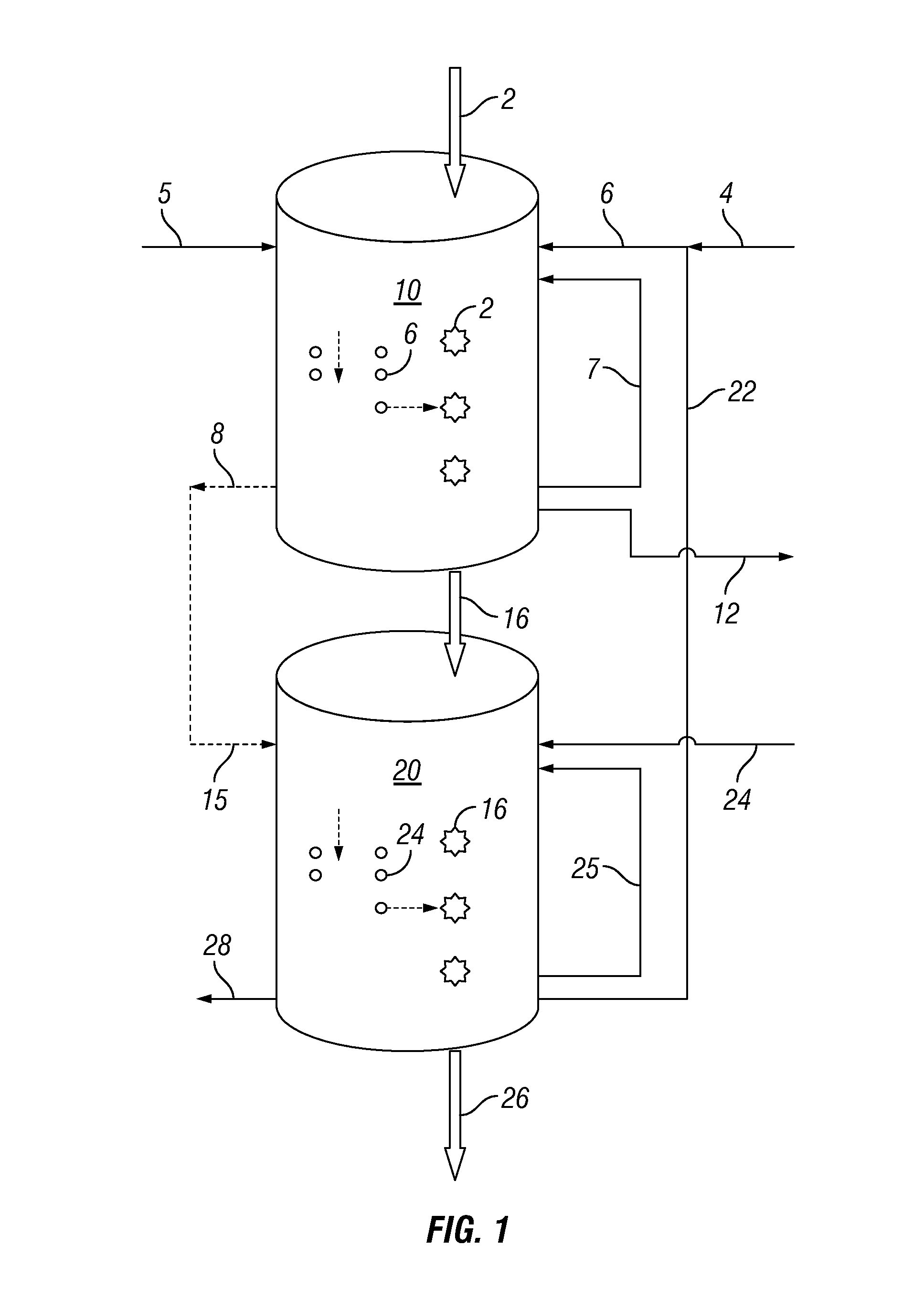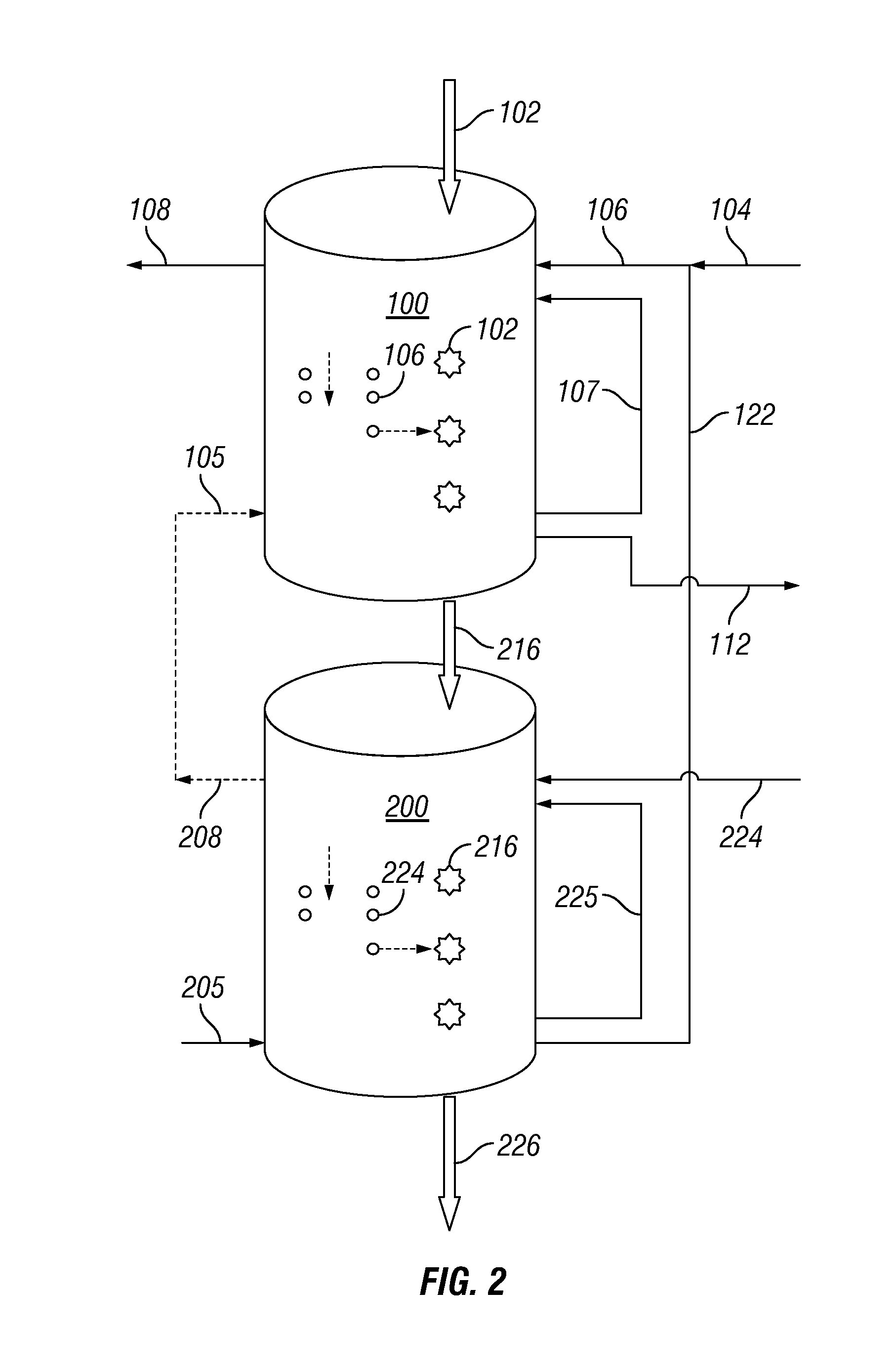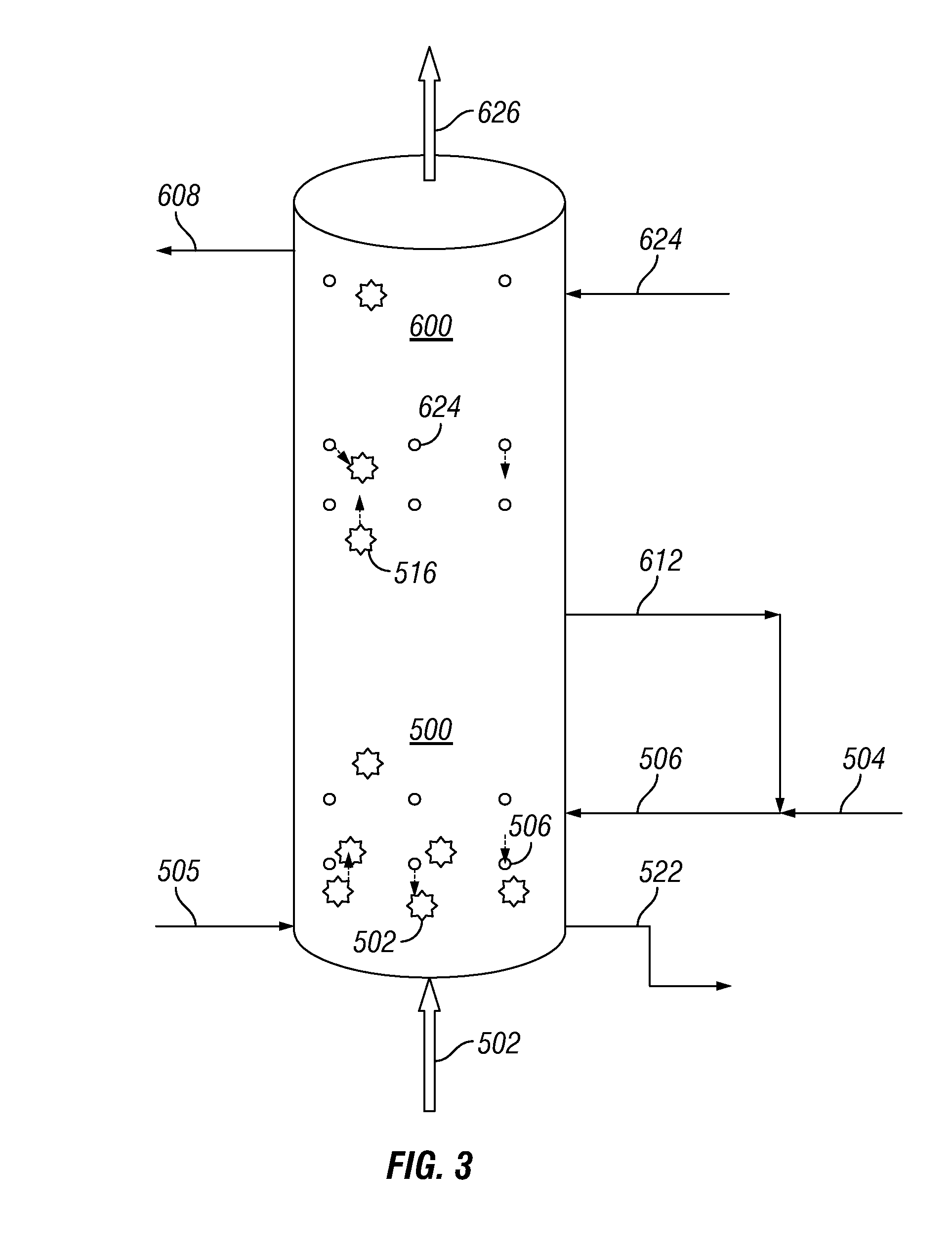Biomass treatment for hydrothermal hydrocatalytic conversion
a technology of hydrocatalytic conversion and biomass treatment, which is applied in the direction of lignin derivatives, pulp liquor regeneration, glucose production, etc., can solve the problems of difficult penetration of lignocellulose biomass structure with chemicals, difficult to break down the long chain polymeric structure of cellulose into carbohydrates that can be used to produce fuel, etc., to reduce the effectiveness of hydrothermal hydrocatalytic treatment and minimize the amount of water used
- Summary
- Abstract
- Description
- Claims
- Application Information
AI Technical Summary
Benefits of technology
Problems solved by technology
Method used
Image
Examples
examples 1
[0100]A 25-mm inside diameter by 350-mm glass chromatography column was packed with 30.1 grams of southern pine (39.5% moisture) to a height of 240 mm, filling 118 milliliters of bed volume. 40 grams of 1N KOH were poured into the bed at the top, and allowed to drain for 30 minute. The effluent was collected and recycled 10 times, producing 9.98 grams of effluent that were analyzed by ion chromatography for chlorides and phosphates. The base wash effluent was found to contain 20.4 ppm chloride and 25.1 ppm phosphate, removed by the trickle bed treatment process.
[0101]The chloride concentration was 33% higher than the maximum observed in treatments using a larger amount of base, for a wood bed fully immersed in aqueous base solution. Despite producing a final wash that was only 8% of a bed volume, nearly 16% of the chlorine present on the wood was removed via recycle contacting. Additional chloride and phosphate removal is expected for additional base washing cyc...
PUM
| Property | Measurement | Unit |
|---|---|---|
| temperature | aaaaa | aaaaa |
| pressure | aaaaa | aaaaa |
| temperature | aaaaa | aaaaa |
Abstract
Description
Claims
Application Information
 Login to View More
Login to View More - R&D
- Intellectual Property
- Life Sciences
- Materials
- Tech Scout
- Unparalleled Data Quality
- Higher Quality Content
- 60% Fewer Hallucinations
Browse by: Latest US Patents, China's latest patents, Technical Efficacy Thesaurus, Application Domain, Technology Topic, Popular Technical Reports.
© 2025 PatSnap. All rights reserved.Legal|Privacy policy|Modern Slavery Act Transparency Statement|Sitemap|About US| Contact US: help@patsnap.com



